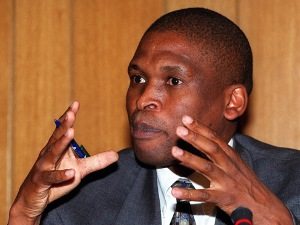
[miningmx.com] – AN important feature of the Department of Mineral Resources (DMR’s) annual report published earlier this month was acknowledgement of its capacity constraints, both in its legal and financial activities.
It led to the concession by Thibedi Ramontja, director-general of the department in his budget speech in parliament on October 16 that capacity building was a key goal for the 2013/14 financial year which, incidentally, kicked off in April.
Two phrases pulled from the annual report demonstrate the capacity problems.
“The department’s inability to attract and retain key staff such as inspectors and mineral economists remains a challenge,’ the DMR said in its report, adding that the resignation of its chief financial officer had hindered its financial activities.
Elsewhere in the report, it said the chief directorate of Legal Services had “. continuously experienced severe capacity challenges during the last few years’. This was owing to a “. constant increase in appeals and litigation’.
“This phenomenon has resulted in unnecessary additional litigation against the department, and is of major concern,’ the report stated.
As if to demonstrate the point, the DMR’s auditor qualified the department’s financial statements. Ayanda Shezi, spokesperson for the DMR, told Miningmx the problem was with revenue collections, especially permit fees and royalty collections.
There’s tacit acknowledgement in these statements of criticism the South African mining sector has had of its regulator for several years: that mining licence applications take too long, while conversations with the DMR are prolix, and time consuming.
Bruce Falcon, an attorney for Brink, Falcon & Hulme Inc., said he hoped capacity improvements were even-handed such that more hands were dedicated to approving mining and prospecting licence applications, rather than just on the compliance side.
“The focus on the compliance side might be in relation to the recent resurgence of the BEE aspects which undoubtedly will be high on the DMR’s hit list again soon,’ he said.
The worries about capacity in the DMR, however, have been overtaken by the larger issues of policy certainty and security of tenure. Questions about ministerial discretion have long troubled South Africa’s mineral law, but the uncertainty has been heightened recently following proposed amendments to the Minerals & Petroleum Resources Development Act (MPRDA).
“Regarding the admin clean-up that it [DMR] is embarking upon, this is highly commendable, but it won’t mean much if they don’t get the policy sorted out,’ says Nicola Jackson, a partner at Fasken Martineau, an attorneys.
“The reason investors are looking elsewhere is not only because of the inefficiency of the department, but mainly because of the policy uncertainty,’ she said.
Says Keith Scott, MD of MSA Group, a company that provides consulting services to the mining sector: “I was in India two weeks ago and almost all my clients expressed reservations about the proposed MPRDA amendments, especially those pertaining to ministerial discretion on pricing.
“These clients felt that uncertainty on these amendments would prevent them from investing’.
The DMR, however, seems cocooned to the broader anxiety, focused as it is on its internal functions. Ramontja commented in parliament that the South African mining sector was, in fact, growing, suggesting the sector would recover as the global economy adjusted to slower growth in China.
The number of mines had increased to 1,579 in 2012 compared to 993 in 2004, representing 59% growth, he said. In the last three years, however, the number of active mines has grown by only 4%.
He added that the mining industry’s contribution to GDP had increased to 9.3% last year.
“I find it surprising that, given the marked decrease in mining activity over the past year or so, the mining industry’s GDP has increased. These figures don’t talk to what we are seeing in reality; well, certainly not from the corporate and legal side,’ said Jackson.
As for the strain felt by the DMR’s legal division, that may only be increased especially if the MPRDA amendments are passed. In this light, one wonders whether the DMR’s problems are largely of its own making.










